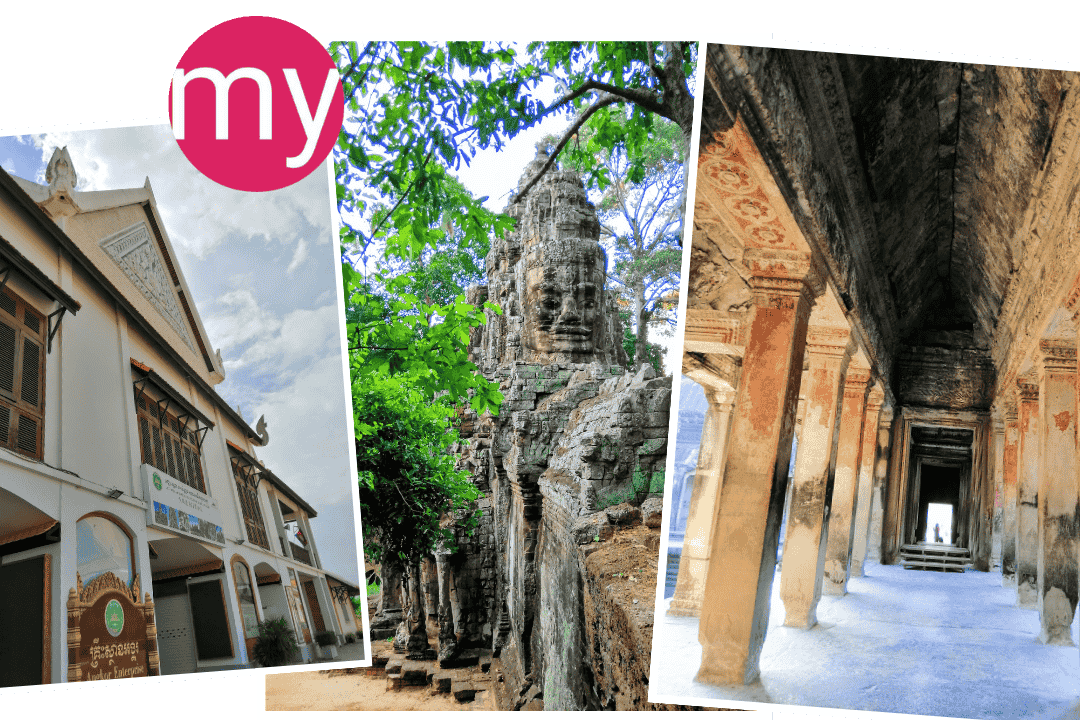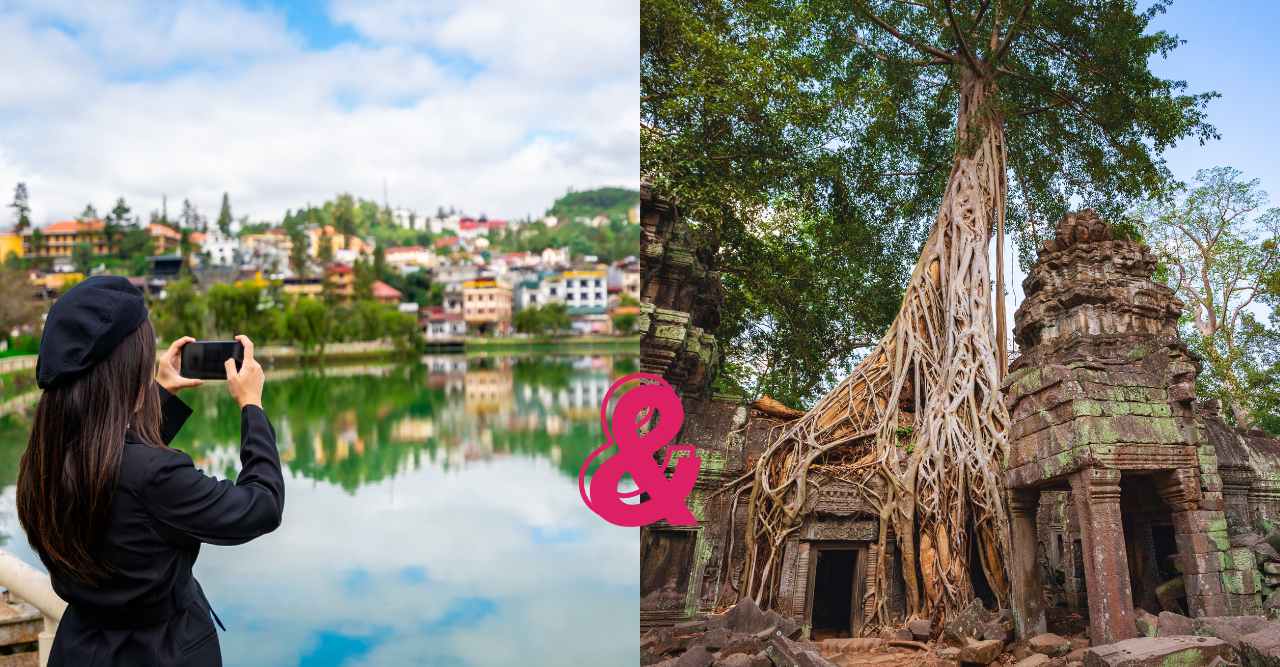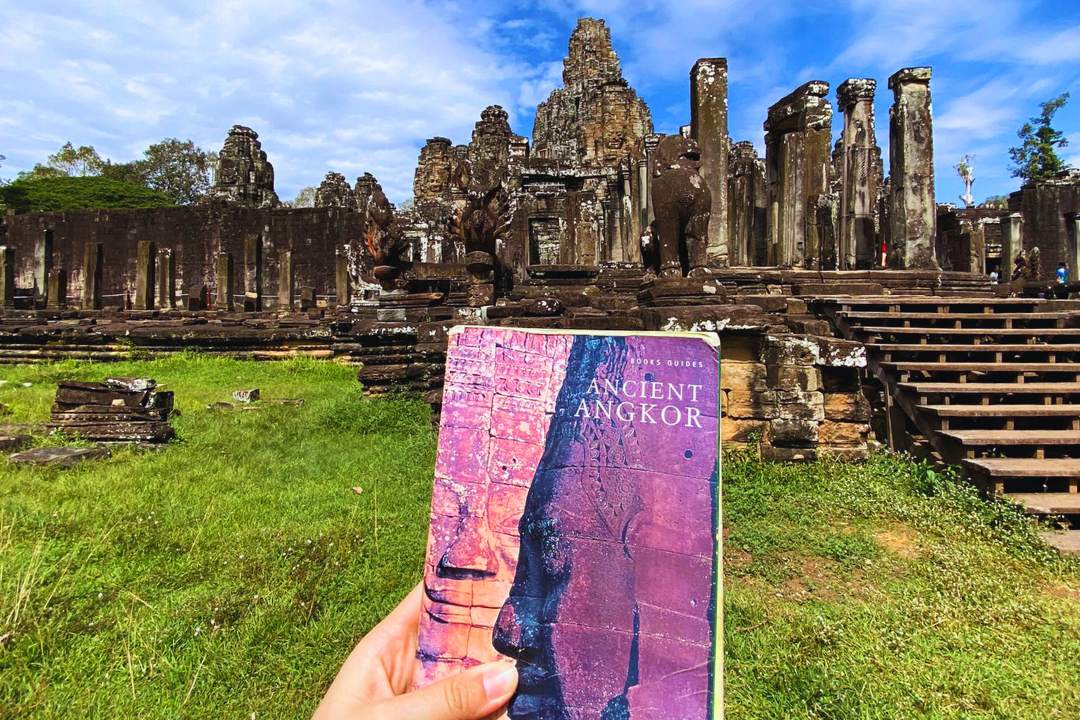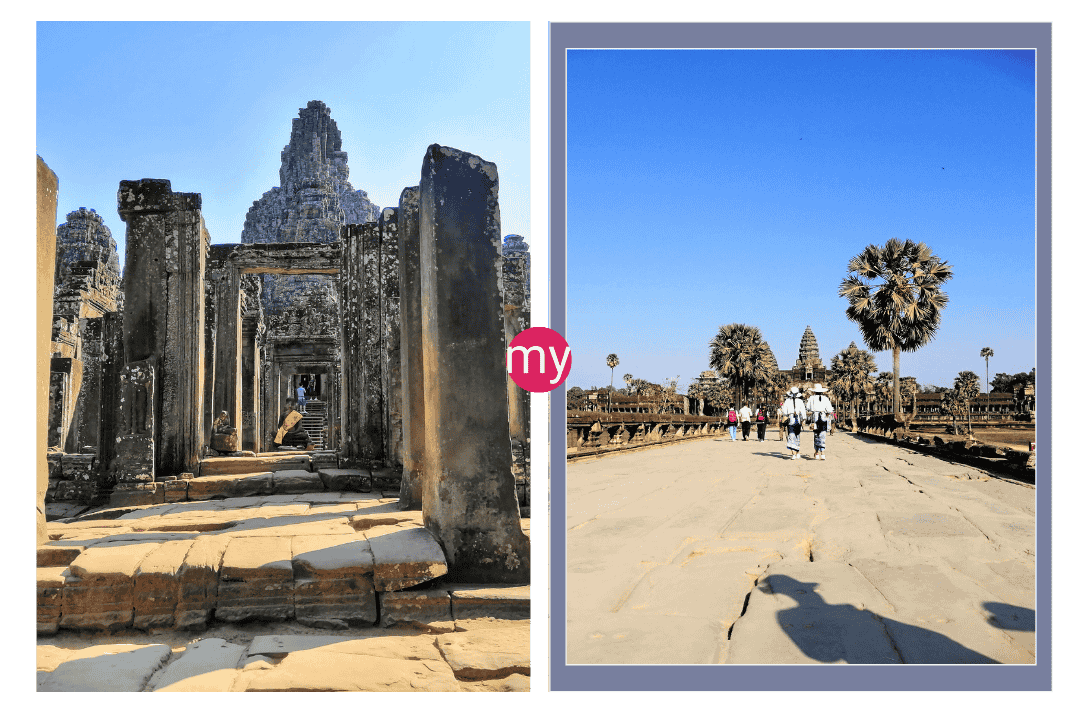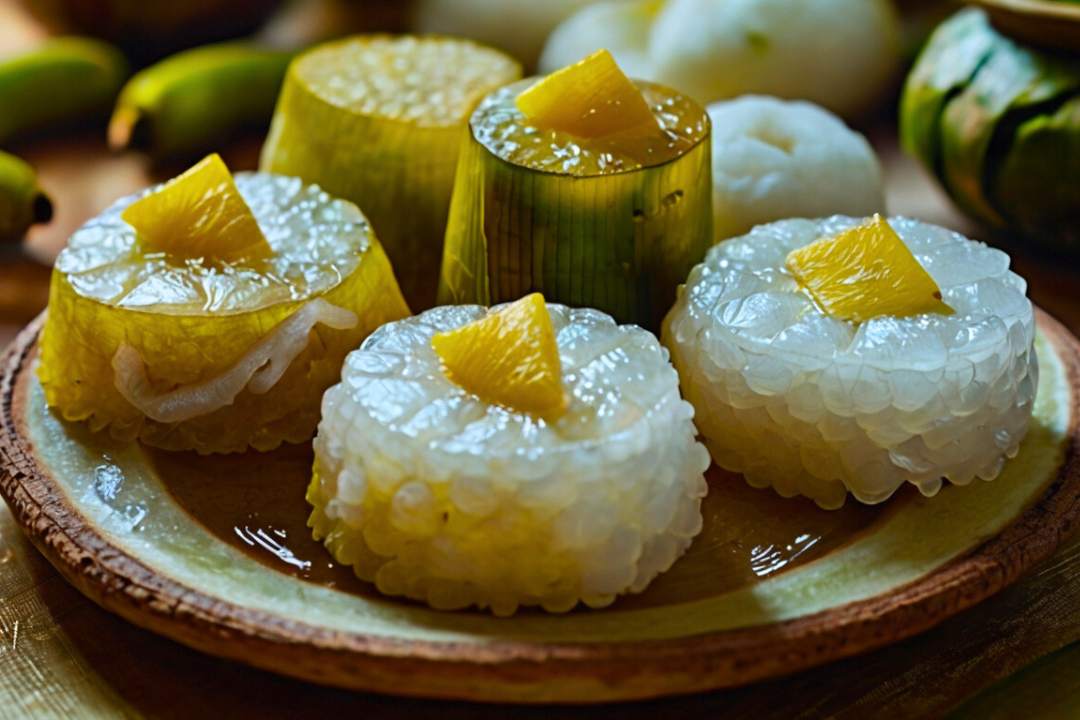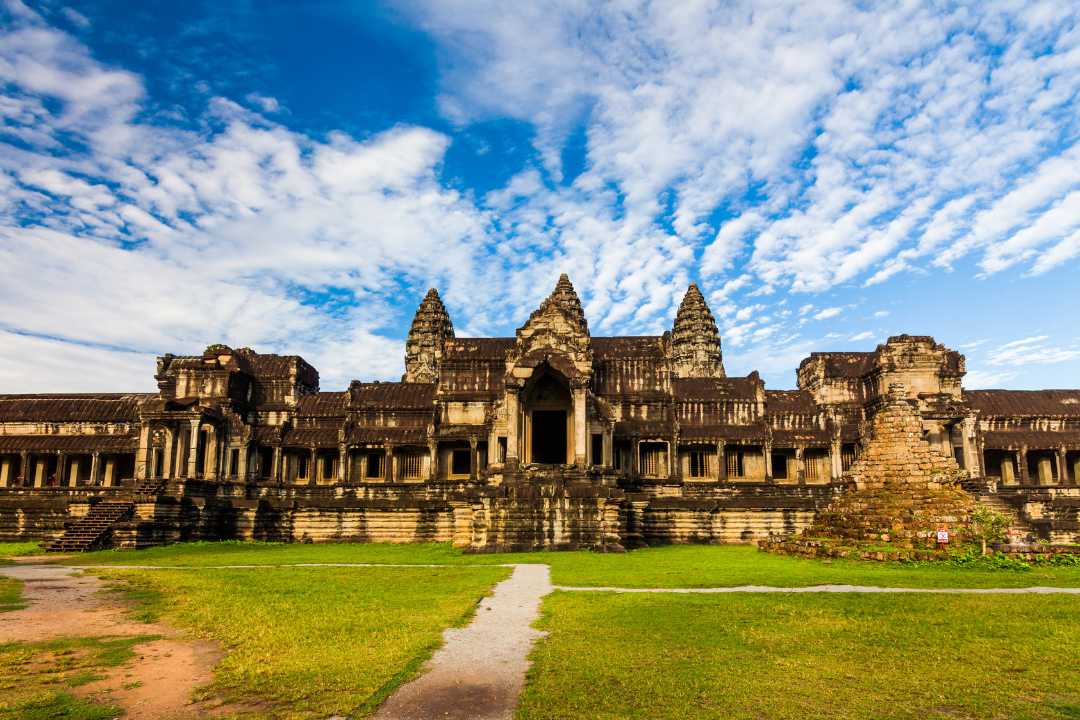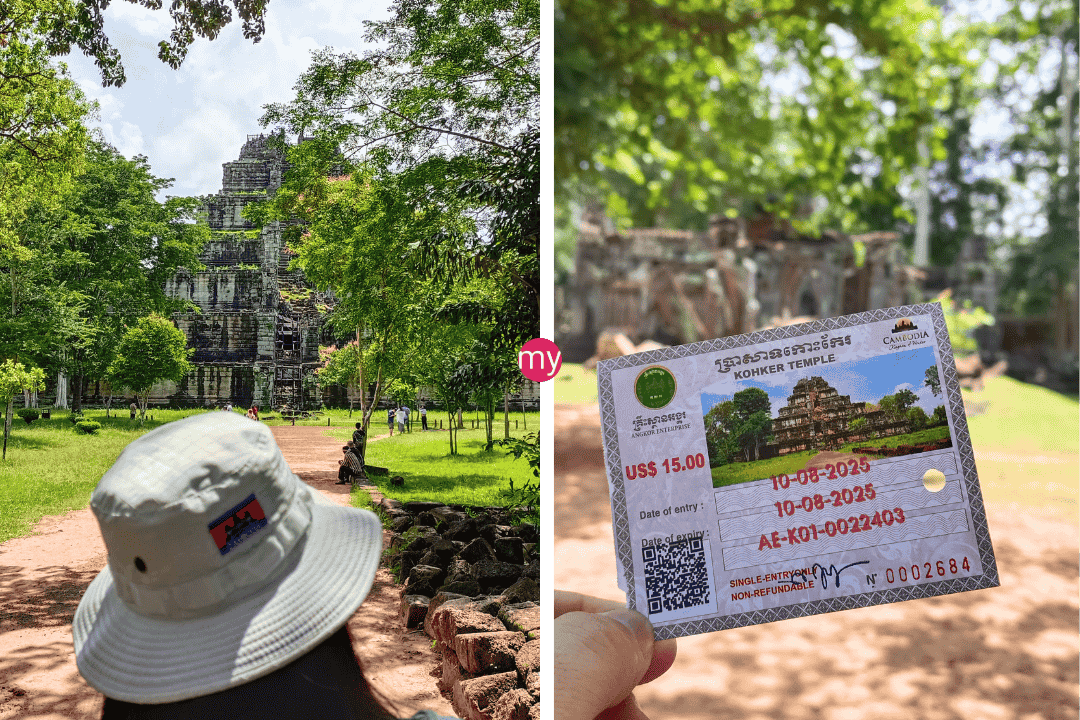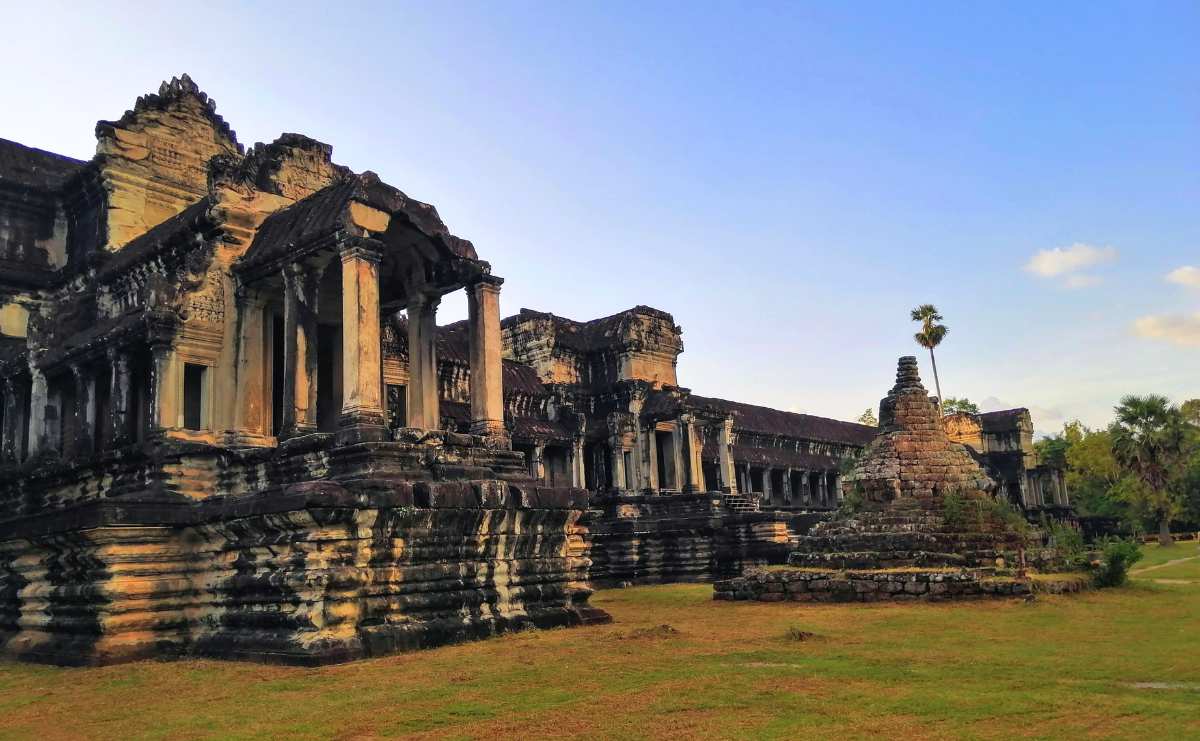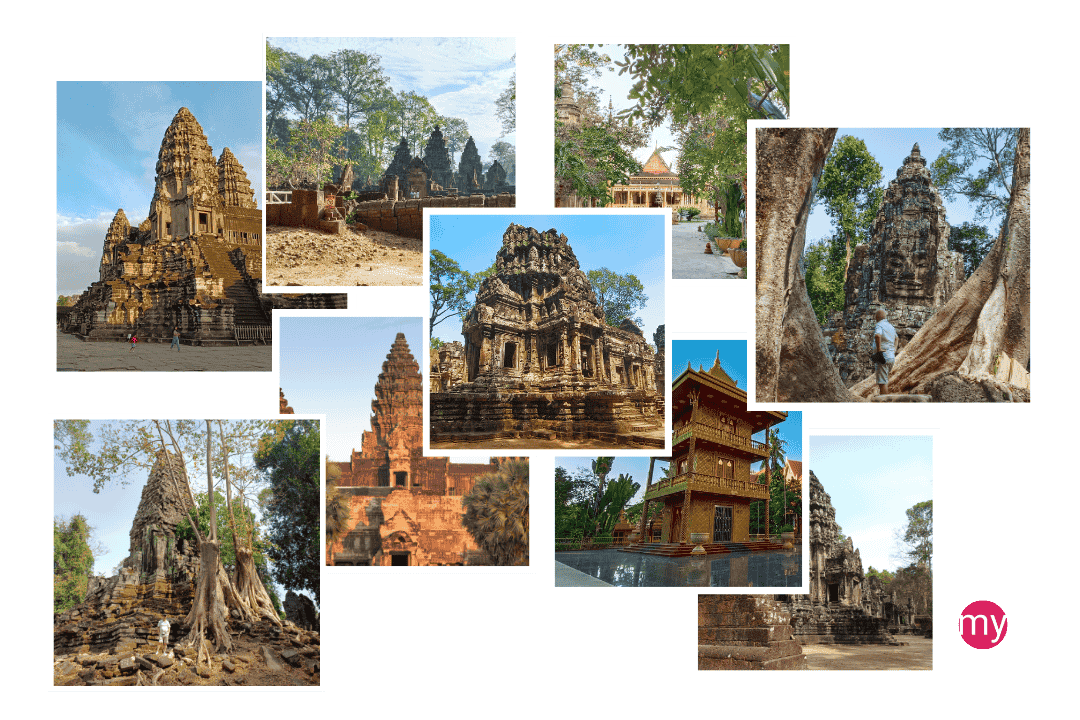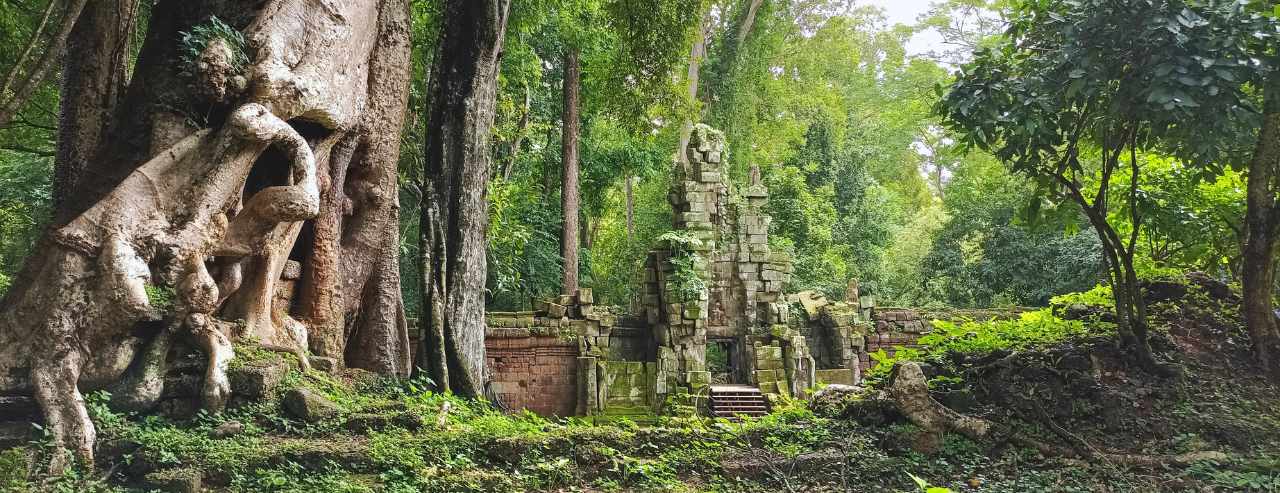The Green Season: Angkor's Most Beautiful (And Least Crowded) Time!
Want to see Angkor Wat with almost no tourists? Visit during the Green Season. The rain makes temples greener, moats fuller, and crowds smaller!
When Angkor’s Green Season hits, everything changes. Thick green leaves cover the temples. Fresh rain washes the air clean. Streams and ponds come alive. Angkor Wat feels brand new. The crowds are gone, and you get quiet paths all to yourself. Colors pop everywhere. Moss on the stones glows bright. Trees look full and wild.
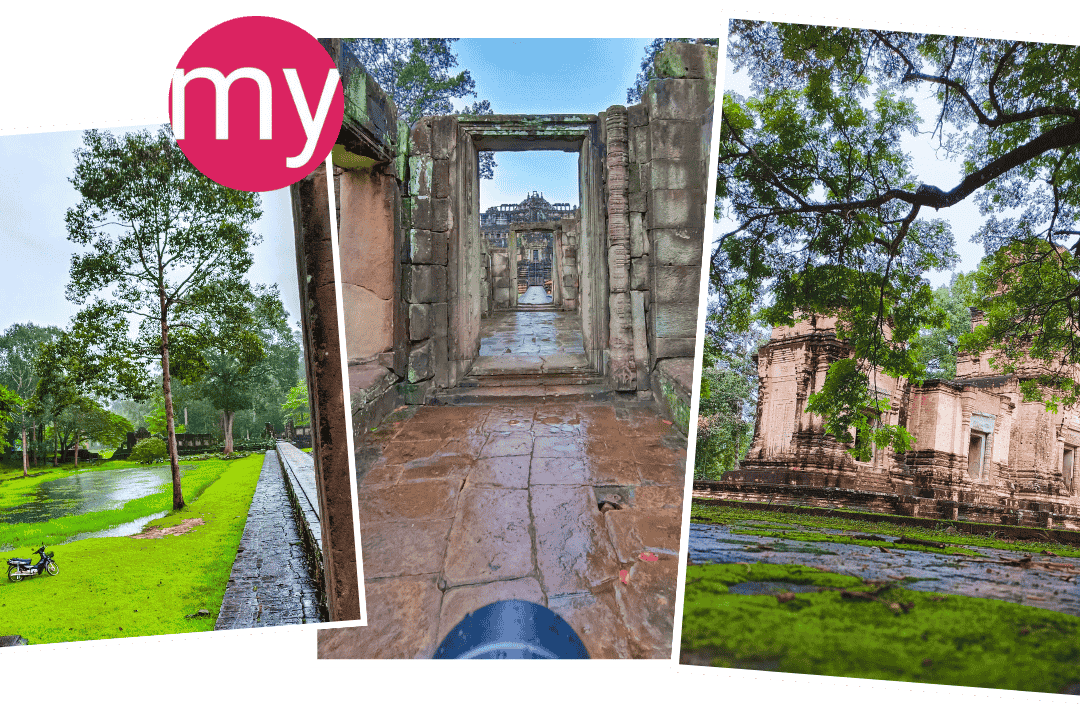
And the sunsets? Pure magic. Travelers chasing the perfect shot? They find it here, with fewer people and rich, vivid scenes. Angkor’s beauty reaches another level, but only for those who catch it at its most pure and natural.
7 Reasons Why The Green Season is Angkor’s Most Beautiful Time
The Green Season in Cambodia (May-October) offers a totally different Angkor experience. Many tourists skip these months because of rain worries, but smart travelers know better! Here’s why you should plan your Angkor trip during these lush months.
1. Fewer Crowds Mean Better Photos and Experiences
Let’s face it – nobody wants hundreds of tourists in their perfect Angkor Wat shot! During the Green Season – Angkor’s most beautiful time – visitor numbers drop by up to 80%.
What does this mean for you?
- No waiting in long lines at ticket counters
- Clear photos without strangers in your shots
- Time to actually enjoy temples without being rushed
- More personal attention from guides
A solo traveler named Elena wrote in her TripAdvisor review: “We had Ta Prohm practically to ourselves after a rain shower. It felt magical and adventurous in a way that wouldn’t be possible with crowds.”
During peak season, over 5,000 tourists crowd Angkor Wat for sunrise alone! In the Green Season, you might share the moment with just 200-300 others.
| Aspect | Details |
|---|---|
| Timing | Peak greenery occurs from September to October, with mosses, lichens, and foliage transforming temple stones into living art. |
| Tourism Impact | Visitors dropped to near-zero during COVID-19 lockdowns (2021) but rebounded to ~300,000 foreign tourists in late 2024. |
| Value | Hotels and flights offer 30-50% discounts during green season (May–October), with opportunities for crowd-free photography. |
| Sustainability | Low-season travel supports year-round local employment and reduces overtourism. |
2. The Landscape Transforms into Lush Jungle Paradise
The name “Green Season” isn’t just clever marketing! Rain brings Angkor’s surroundings to life, creating a stunning backdrop that dry-season visitors miss completely.
During these months:
- Temple stones become covered with bright green moss and lichens
- Moats and reservoirs fill to capacity, creating perfect reflections
- Forest and jungle vegetation turns vibrant emerald green
- Ancient carvings seem to come alive against the green backdrop
Temple walls that appear plain gray in dry months now show stunning patches of green moss, adding texture and life to your photos. The Angkor Wat moat fills completely, giving you those picture-perfect reflection shots seen in top travel magazines.
Park rangers report that moss coverage on temple walls can reach 70-80% in shaded areas by late Green Season, compared to less than 20% in dry months!
3. Dramatic Skies and Lighting Create Stunning Photography Conditions
Photographers often plan trips specifically for the Green Season – Angkor’s most beautiful time – because of the amazing light conditions.
What makes Green Season photography special:
- Dramatic cloud formations create amazing backdrops
- After-rain sunsets are more vibrant and colorful
- Morning mist and fog add mystery to temple photos
- Rain-slicked surfaces create natural reflections everywhere
A group of photographers who visited in October found that “the combination of wet ground and dramatic skies gave their photos an ethereal quality impossible to capture in dry season.”
Even with a basic smartphone camera, you’ll take home stunning shots that dry-season visitors can only dream about!
Lush Angkor Secrets Only Seen By The Boldest Travelers
| Key Points | Details |
|---|---|
| Experiential Advantages | Visiting Angkor in the Green Season offers distinct experiential advantages: lush scenery, fewer crowds, and unique cultural encounters, as recognized by experts. |
| Sustainable Tourism Benefits | Encouraging Green Season tourism helps with sustainable destination management, easing pressure on Angkor’s heritage sites and providing continuous economic benefits. |
| Shifting Traveler Behavior | Traveler behavior is trending towards off-peak travel, as shown by industry surveys. Experts consider this an opportune moment to solidify Angkor’s year-round appeal. |
| Considerations to Address | Important considerations like safety, infrastructure, and marketing are being addressed or must be addressed to fully benefit from the Green Season’s potential. |
4. Rain Patterns Are Predictable and Manageable
Many travelers worry about constant downpours ruining their trip. The truth? Rain in Cambodia is quite predictable and rarely lasts all day.
Typical Green Season rain patterns:
- Mornings are often clear and perfect for temple visits
- Rain usually comes in short afternoon bursts (30-60 minutes)
- May and June have fewer rainy days than September/October
- Rain brings welcome cooling after hot mornings
Local guides know these patterns well and plan tours accordingly. A family who visited in June reported: “It rained most days, but mostly before we started our day or during our afternoon break. Our guide adjusted our schedule to make the most of dry periods.”
Cambodia records about 6 hours of sunshine daily even during rainy months – that’s plenty of time for exploring!
5. Significant Cost Savings on Everything
Your vacation budget stretches much further during the Green Season. With fewer tourists competing for rooms and services, prices drop significantly.
Typical Green Season discounts:
- Hotels offer 20-40% lower rates than peak season
- Many properties add free perks (spa credits, airport transfers, meals)
- Flight prices drop by about 15% on average
- Tour guides and drivers often charge less
- Even souvenirs can be negotiated down more easily
One family noted their trip cost about 25% less overall compared to dry season quotes. Five-star hotels that charge $200/night in December might go for $120-150 in August. Some properties even offer “stay 3, pay 2” deals to attract Green Season visitors.
These savings often allow travelers to upgrade their experience – staying in better hotels or adding extra activities that might be too expensive during peak season.
Related Travel Options
Green Season Favorites:
- Private Sunrise Tour – Beat the crowds + morning rain for perfect reflections
- Sunset Experience – Post-rain skies create spectacular sunset colors
- Ta Prohm Early Bird – “Tomb Raider temple” with no crowds and emerald moss
- Beng Mealea Adventure – Remote jungle temple at its most atmospheric
- Floating Village Excursion – See the lake at its fullest, most impressive state
See all Green Season options at My Siem Reap Tours
6. Unique Cultural Experiences Only Available This Time of Year
The Green Season coincides with important Cambodian cultural events that dry-season visitors miss completely.
Special Green Season cultural experiences:
- Buddhist Lent (Chol Vossa) in June/July – monks enter three-month rain retreats
- Pchum Ben ancestors’ festival in September/October – colorful ceremonies at local temples
- Rice planting and harvesting activities in the countryside
- Water-dependent activities like floating village tours on the fully-expanded Tonlé Sap Lake
These authentic cultural moments happen when most tourists are away, giving you a deeper connection to Cambodia. Local guides can include visits to monasteries during ceremonies or countryside tours to see traditional farming.
The Tonlé Sap Lake expands to over 4 times its dry-season size during these months – from 2,500 km² to more than 10,000 km²! This creates a completely different landscape and ecosystem to explore.
7. More Comfortable Temperatures Than Late Dry Season
Contrary to what you might think, the Green Season can actually be more comfortable for temple exploration than March or April (peak dry months).
Temperature comparisons:
- March-April: Days often reach 35-38°C (95-100°F), feeling brutally hot
- Green Season: Temperatures typically stay around 32°C (90°F)
- Afternoon rains cool things down considerably
- Cloud cover provides welcome shade
“The weather was definitely cooler than in April,” reported one family. “The kids never complained about heat – a win we credit to cloud cover and rain-cooled mornings.”
While humidity is higher, the regular cooling effect of rain makes long temple walks more pleasant. Plus, with fewer tourists crowding narrow temple corridors, you’ll feel less stifling heat inside temple structures.
How to Make the Most of Your Green Season Visit
To fully enjoy the Green Season – Angkor’s most beautiful time, follow these practical tips from experienced travelers:
Plan Your Daily Schedule Around Rain Patterns
Smart scheduling makes all the difference:
- Start early (6-7am) to maximize dry morning hours
- Plan indoor activities or hotel breaks for late afternoons when rain is most likely
- Keep your schedule flexible to adapt to weather changes
- Use weather apps to track rain patterns
Our Private Angkor Wat Sunrise Tour starts extra early to catch both sunrise and complete major temple visits before any afternoon showers. Many guests tell us this timing worked perfectly during their Green Season visits.
Pack Appropriately
A few simple items make rainy season exploring much more comfortable:
- Lightweight rain jacket or poncho (better than umbrellas in temple areas)
- Quick-dry clothing (avoid cotton which stays wet)
- Waterproof phone case or camera bag
- Non-slip shoes with good traction (temple stones can be slippery)
- Small quick-dry towel for wiping off after showers
Book a Knowledgeable Local Guide
During the Green Season, an experienced guide becomes even more valuable:
- They know which temples drain better after rain
- They can adjust routes based on weather patterns
- They provide cultural context for Green Season events
- They know the best spots for after-rain photography
Our guides at My Siem Reap Tours live in the area year-round and know every stone of Angkor in all weather conditions. They’re experts at maximizing Green Season visits.
For those wanting to experience the lush beauty of remoter temples, our Banteay Srei Tour shows how the pink sandstone comes alive with vivid colors when wet from recent rains.
Have Backup Plans for Heavy Rain Days
Even with careful planning, you might encounter heavier rain sometimes:
- Visit the Angkor National Museum in Siem Reap
- Take a cooking class or art workshop
- Enjoy spa treatments at your hotel
- Explore covered markets or cafes in town
- Relax and enjoy watching the rain (many hotels have covered outdoor areas)
Our Ultimate Siem Reap Adventure Tour includes both temple visits and town activities, giving you plenty of options regardless of weather.
Capture Unique Green Season Photo Opportunities
Don’t miss these special photo chances:
- Reflection shots in puddles after rain
- Misty morning temples before crowds arrive
- Dramatic sky backgrounds during changing weather
- Monks with umbrellas against temple backdrops
- Vivid green moss on ancient stone
The Angkor Wat Sunset Tour can be especially rewarding during Green Season, as post-rain sunsets often feature spectacular colors and dramatic cloud formations.
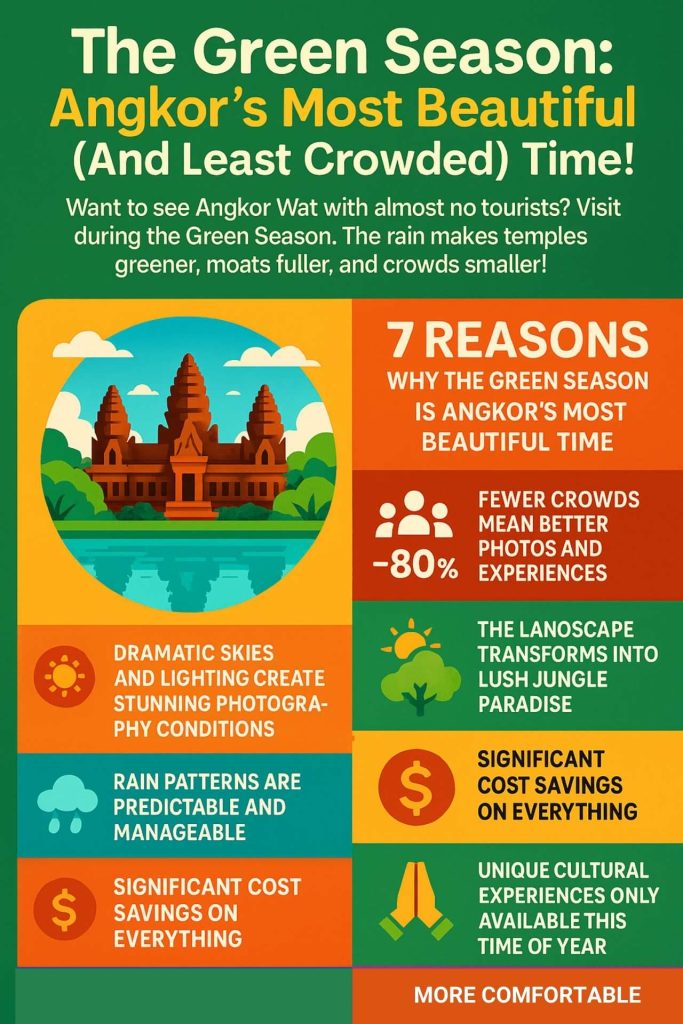
Cambodia: A Green Season Paradise Beyond Angkor
Cambodia’s beauty extends far beyond the temples during the Green Season. The entire country transforms with the rains.
The Countryside Comes Alive
During May to October:
- Rice fields turn brilliant emerald green
- Rural villages buzz with farming activity
- Waterfalls flow at full capacity
- Fruit trees bear seasonal treats like mangosteen and rambutan
When you book our Beng Mealea Tour, you’ll drive through this green countryside to reach a temple that feels like a true jungle adventure during Green Season.
Tonlé Sap Lake Experiences
The massive Tonlé Sap Lake near Siem Reap reaches its maximum size during these months:
- Floating villages become fully navigable
- Bird watching opportunities improve with water levels
- Fishing communities show traditional high-water fishing methods
- The flooded forest ecosystem can be explored by boat
Our Angkor Wat to Siem Reap Floating Village tour shows you this unique ecosystem that only exists in its full glory during Green Season months.
Easier Travel Requirements
Cambodia has made visiting easier than ever. The Arrival Cambodia system lets you handle visa requirements online before your trip, making entry smooth and simple.
Editor’s Note: I visited Angkor in May and got wet. Best decision ever! Rain chases away tourists and makes those temples pop with green. My photos look amazing. The locals know what’s up – that’s why they call it “Green Season.” You’ll spend less cash and see more stuff. Just bring a raincoat!
Plan Your Green Season Adventure Now
The Green Season (May-October) truly lives up to its name as Angkor’s most beautiful time. With lush landscapes, smaller crowds, lower prices, and unique photo opportunities, it offers advantages that peak-season travelers miss out on.
Sure, you’ll need a poncho sometimes. You’ll step in puddles occasionally. But you’ll also experience Angkor the way it was meant to be seen – green, vibrant, and not overrun with tourists.
Ready to experience the magic of Angkor’s Green Season? Our Early Bird Ta Prohm Tour After Sunrise is perfect for Green Season visitors who want to see the famous “Tomb Raider temple” without crowds, when morning light filters through rain-washed leaves.
For those who prefer alternative sunrise locations away from crowds, our Pre Rup Sunrise Tour offers wonderful opportunities to see the morning light play across rain-refreshed temple stones.
Want to see everything in a single day? Our 1 Day Angkor Wat Grand Loop Private Tour can be adjusted for Green Season conditions, focusing on the best-drained temples and most photogenic spots after rain.
Don’t let rain worries stop you from seeing Cambodia at its greenest and most authentic. Take rain-proof gear, keep a flexible attitude, and prepare to be amazed by the true beauty of Angkor during the Green Season.
Contact us to start planning your Green Season adventure. The temples are waiting – greener, quieter, and more magical than you ever imagined!
Brought to you by Dan and Mat, Your tour planners.
Featured
Explore more on My Siem Reap Tours
Koh Ker and Beng Mealea guided tour | Banteay Srei temple guided tour | Angkor Wat Sunrise tour | Private Angkor Wat Sunset Tour | Koh Ker and Beng Mealea guided tour | Morning Siem Reap floating village tour | Afternoon Siem Reap floating village tour | Private Angkor Wat special tour | Kulen Waterfall small group guided Tour | Private Angkor Wat mix temples photo tour
